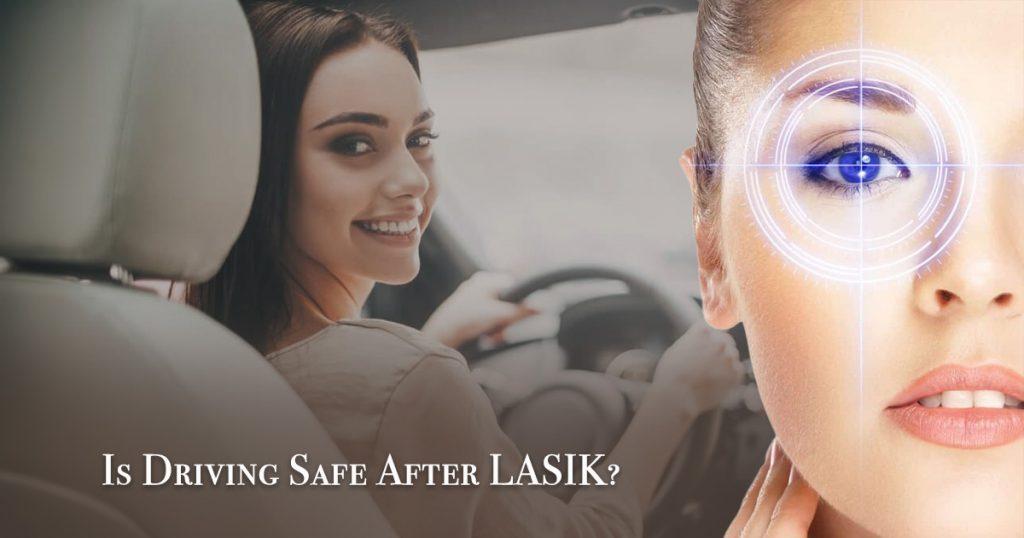LASIK (Laser-Assisted In Situ Keratomileusis) is a popular eye procedure designed to minimize or eliminate the need for glasses or contact lenses. It is famous for its rapid recovery time and high success rate. But, can you really drive after a LASIK surgery?
Understanding LASIK Surgery
LASIK is a refractive eye surgery used to treat myopia (nearsightedness), hyperopia (farsightedness), and astigmatism. The technique involves reshaping the cornea using a laser to increase the eye’s ability to concentrate light onto the retina, resulting in better vision.
Here’s the procedure of LASIK:
- Before the Surgery: Before you have LASIK, you’ll need a detailed eye exam. This helps determine if LASIK is right for you by checking things like the thickness of your cornea, the health of your eyes, and how stable your vision is.
- On the Day of Surgery: The LASIK procedure itself takes about 15 minutes for each eye. You’ll receive numbing drops to make sure you don’t feel anything.A tiny device can keep your eyelids open.. Then, a laser will create a flap in your cornea and reshape the corneal tissue.
- After the Surgery: After LASIK, you’ll get specific care instructions. These include applying prescription eye drops and refraining from specific activities to facilitate good recovery.
Immediate Post-Operative Care
After LASIK surgery, it’s crucial to follow your eye surgeon’s post-operative care instructions carefully. These instructions will often include:
- Resting Your Eyes: Resting your eyes for the first 24 hours after surgery is essential to allow the initial healing process to begin.
- Using Prescribed Eye Drops: To avoid infection and inflammation, your surgeon will prescribe antibiotic and anti-inflammatory eye drops.
- Avoiding Rubbing Your Eyes: It is essential not to rub your eyes, since this can impede the healing process.
Can you drive after LASIK?
Most patients are recommended to avoid driving for at least 24 hours following LASIK. This is crucial as vision may be blurry, and side effects such as light sensitivity and glare are common during this period. A follow-up appointment is typically scheduled for the day after the surgery. During this visit, the eye doctor will assess the healing process and determine if the patient’s vision has stabilized enough for safe driving.
Factors Affecting When You Can Drive After LASIK
Several things can affect how long should you wait to drive after LASIK:
Healing Process
It depends on the healing process and your surgeon’s recommendations. Many individuals can resume driving within a few days to a week of surgery. However, the exact timing can vary:
- Day 1 Post-Operation: Most people should avoid driving on the first day after LASIK surgery. Your vision may be blurred, and your eyes may be light-sensitive.
- Day 2 to 4: Many people see considerable improvements in their vision within the first few days. If you are at ease and have clear vision, you may be able to drive short distances. However, before you resume driving, talk with your surgeon.
- One Week Post-Operation: By this time, most patients have recovered enough to drive safely, though it’s crucial to ensure that you meet your surgeon’s criteria for visual acuity and comfort.
Type of Vision Correction
If you have more severe vision problems, like high myopia or astigmatism, your recovery might take longer than for those with milder issues. Talk to your surgeon to get a clear idea of what to expect.
Side Effects
Frequent adverse effects, such as dry eyes, brightness, and halos, can impair your ability to drive. If these problems continue, consult your eye doctor before you drive.
Safety Tips for Driving After LASIK
To ensure you’re safe when you start driving again, follow these tips:
- Follow Medical Advice: Stick to the guidance your eye surgeon gives you about when it’s safe to drive. They’ll base this advice on how well you’re healing.
- Start with Short Drives: Begin with short trips during the day to see how your vision performs under real driving conditions.
- Test Your Vision: Before driving, check your vision at home. Try reading signage from a distance and seeing how well you see in different lighting conditions.
- Minimize Distractions: Keep distractions to a minimum while driving. Avoid using your phone and make sure your car is in good condition.
- Be Careful at Night: Be extra cautious when driving at night or in low light until you’re sure your vision is stable.
- Have a Backup Plan: Arrange for alternative transportation or a driver in case you’re not yet ready todrive after surgery.
Driving after LASIK? Wait atleast 24 hours!
LASIK can greatly improve your vision, but you need to be careful about driving afterward. Most people should wait at least 24 hours before driving, and it might take a few days to a week to fully recover. Your recovery time depends on how you heal, the type of vision correction you needed, and any side effects you might have. Follow your surgeon’s advice, test your vision before driving, and start with short, safe trips to make sure you’re ready.
